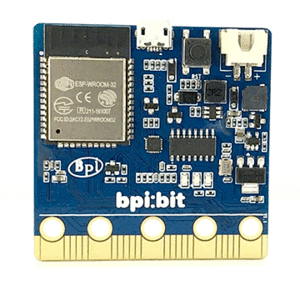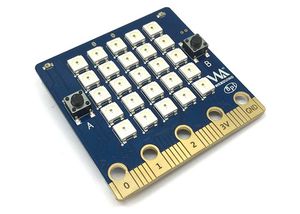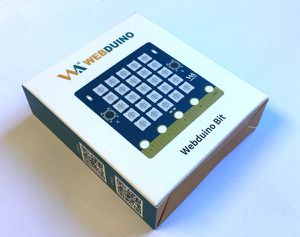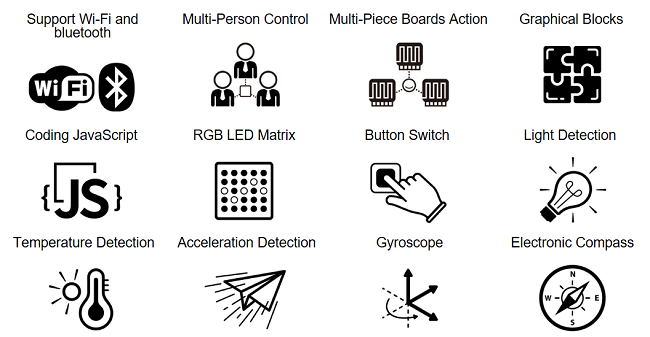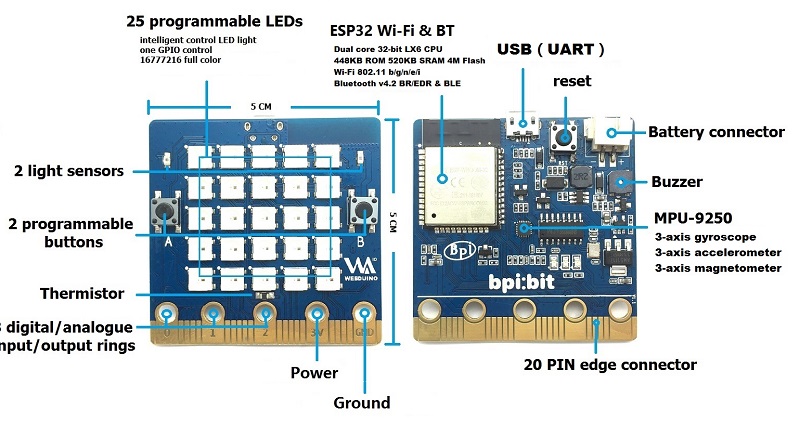Difference between revisions of "BPI-PC101 gesture recognition module"
(Created page with " = Introduction= thumb|Overview: BPI:bit thumb|Overview: BPI:bit File:BPi_bit_webduino_3.jpg|thumb|Overview: BPI:bit f...") |
(No difference)
|
Revision as of 18:03, 4 June 2018
Contents
Introduction
The BPI bit (also referred to as BPI-bit, stylised as bpi:bit) is an ESP32 with 32-bit Xtensa LX6 dual-core processor based embedded system. It supports Webduino, Arduino, MicroPython as well as Scratch X programming environments.
BPI:bit hardware main function:
bpi:bit board is 5 cm x 5 cm in size, weighs 10 ~ 12 grams, it houses a 20-Pin edge connector, built-in lighting matrix with 25 programmable full-color LEDs , two photosensitive light sensors, two programmable buttons, an NTC resistor, a buzzer and a nine shaft sensor (triaxial acceleration Three-axis gyroscope and three-axis magnetic compass), the I/O space configuration is as follows:
- Full color LED matrix: GPIO4
- Photosensitive sensor: GPIO36 (Analog A0, upper left), GPIO39 (Analog A3, upper right)
- Button switch : GPIO35 (A), GPIO27 (B)
- Temperature sensor: GPIO34 (Analog A6)
- Buzzer: GPIO25
- MPU-9250 9-axis sensor: GPIO0, GPIO21, GPIO22, GPIO33
Hardware
Description
The board is 5 cm × 5 cm and has an ESP32 module with 32bit Xtensa LX6 dual-core processor, with a capacity of up to 600DMIPS, with a built-in 448KB ROM and 520 KB SRAM.accelerometer and magnetometer sensors,2.4G WiFI,Bluetooth and USB connectivity, a display consisting of 25 LEDs, two programmable buttons, and can be powered by either USB or an external battery pack.The device inputs and outputs are through five ring connectors that are part of the 23-pin edge connector.
BPI:bit provides a wide range of onboard resources, supports photosensitive sensor, digital triaxial sensor, digital compass, temperature sensor interface.Webduino:bit have 25 intelligent control LED light source that the control circuit and RGB chip are integrated in a package of 5050 components.Cascading port transmission signal by single line.Each pixel of the three primary color can achieve 256 brightness display, completed 16777216 color full color display, and scan frequency not less than 400Hz/s.
BPI:bit use MPU9250 onboard, MPU-9250 is a multi-chip module (MCM) consisting of two dies integrated into a single QFN package. One die houses the 3-Axis gyroscope and the 3-Axis accelerometer. The other die houses the AK8963 3-Axis magnetometer from Asahi Kasei Microdevices Corporation. Hence, the MPU-9250 is a 9-axis MotionTracking device that combines a 3-axis gyroscope, 3-axis accelerometer, 3-axis magnetometer and a Digital Motion Processor™ (DMP) all in a small 3x3x1mm package available as a pin-compatible upgrade from the MPU-6515. With its dedicated I2C sensor bus, the MPU-9250directly provides complete 9-axis MotionFusion™ output. The MPU-9250 MotionTracking device, with its 9-axis integration, on-chip MotionFusion™, and runtime calibration firmware, enables manufacturers to eliminate the costly and complex selection, qualification, and system level integration of discrete devices, guaranteeing optimal motion performance for consumers. MPU-9250 is also designed to interface with multiple non-inertial digital sensors, such as pressure sensors, on its auxiliary I²C port.
Interface
Edge interface
File:BPI bit edge pin define.png
